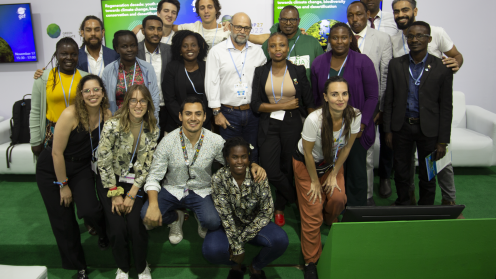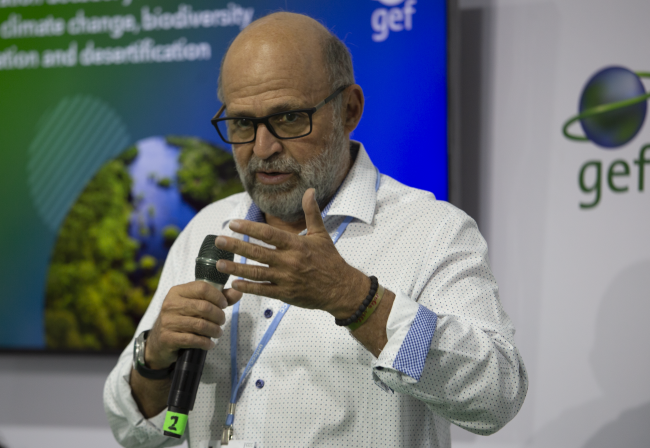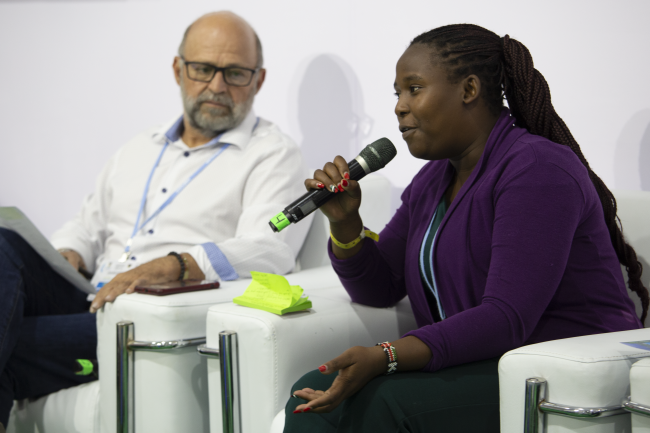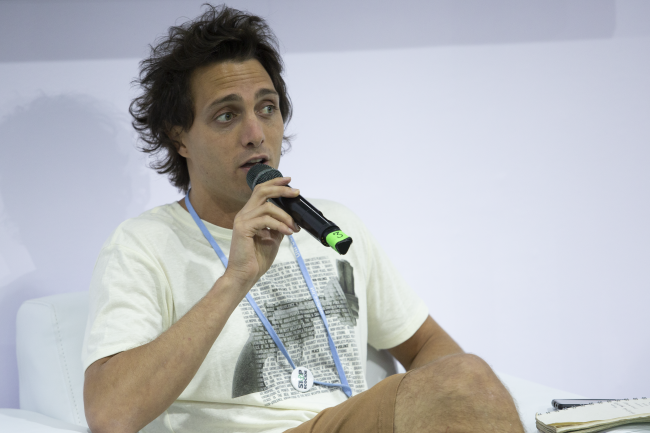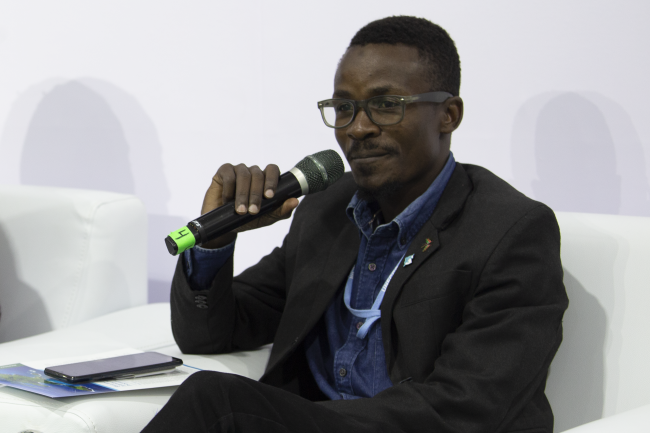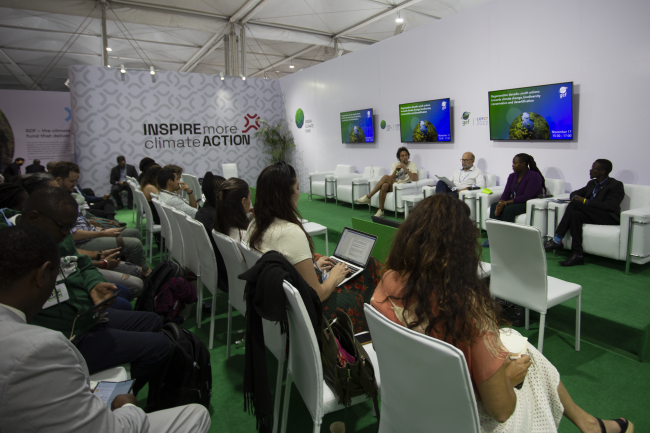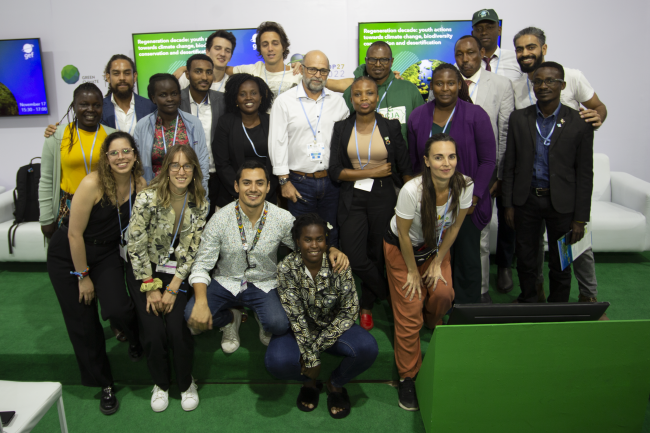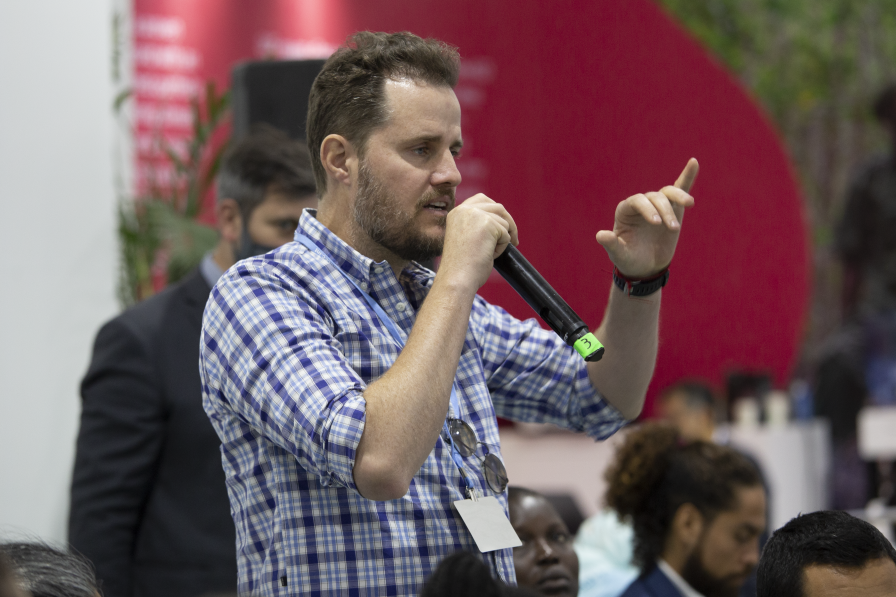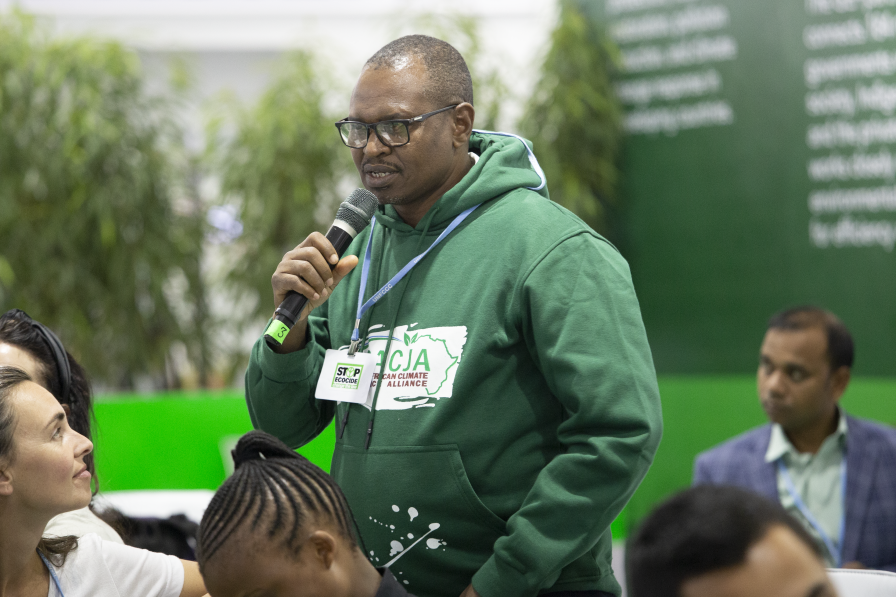Time for Action: Youth initiatives towards climate change, biodiversity conservation, and desertification
In recent years, youth voices calling for action on climate change, biodiversity loss, and desertification have grown louder. The Global Environment Facility (GEF) gathered representatives of youth movements from different parts of the world for a conversation about their initiatives, and how the GEF can better support and engage them. The event was moderated by Carlos Manuel Rodríguez-Echandi, GEF CEO and Chairperson.
In introductory remarks, Rodríguez-Echandi explained the GEF’s medium-term efforts to improve policy coherence across branches of government, across Conventions, and across sectors. Long-term strategic goals, he continued, involve promoting “systems change.” This is not an abstract effort, Rodríguez-Echandi said, as “investing in system change is investing in the youth.” This event, he explained, was a first for the GEF Pavilion and signals this long-term strategy. He underlined the financial uncertainties many young people face, including when attending large conferences such as COP 27, and said the GEF hopes to assist with these difficulties in accessing resources. In particular, he highlighted his wish for investments in putting young people “where they need to be, such as negotiations,” and in the “future implementers of agreements” such as the Post-2020 Global Biodiversity Framework.
This was followed by a round of introductions by youth representatives. Patricia Kombo, UN Convention to Combat Desertification (UNCCD) Land Hero, described herself as a “land activist,” whose community-based organization promotes sustainable land practices in Kenya. Jackem Abdul Hamid, Global Youth Biodiversity Network (GYBN), said GBYN works, among others, on offering capacity-building training to young people so they can contribute to biodiversity policy making. Máximo Mazzocco, Eco House Global, thanked the GEF for their support in financing the first Regional Conference of Youth in Latin America in Costa Rica in 2022.
Rodríguez-Echandi then prompted the panelists to make specific recommendations to the GEF on how to proceed with furthering youth involvement. Kombo suggested creating and drawing on a network of GEF youth ambassadors that could connect with local communities and initiatives. She called for meaningful engagement and capacity building in negotiation skills, concluding that “We want a new GEF, a youthful GEF, a GEF that will work towards restoration together without leaving anyone behind.” Hamid said youth need finance, empowerment, and for spaces to “incubate” their innovative ideas. He also underlined the need to remove barriers to funding that youth also frequently encounter, suggesting the GEF create a “biodiversity fund” for the youth so they have a dedicated funding source. Mazzocco warned against “youthwashing” when creating youth councils or youth ambassador programmes, and emphasized that “when you are giving resources to youth, you are not spending money, you are investing money.” He added that any new GEF mechanism should recognize the diversity of youth, rather than treat youth as a singular entity.
Rodríguez-Echandi then noted that the financing model the GEF follows was created over 30 years ago, on the eve of the 1992 Rio Summit, to help governments with the implementation of the Conventions. This model, he continued, has a significant impact but must be supplemented with direct funding to civil society organizations (CSOs) that does not go through governments. He said “This means a new approach, a change of paradigm for the youth. Whatever we decide, it should offer direct access to GEF funding for the youth.” He stressed, however, that this funding would be reserved for those whose work fits with goals aligned with the Conventions.
The discussion was then opened for a back and forth between Rodríguez-Echandi and the audience on further suggestions about how the GEF can fund youth actors. These included: avoiding one-size-fits-all approaches to youth as they are a diverse group; and cutting out the “middle man” such as external consultants when providing funding to governments and instead paying local organizations for expertise. In answer to a question on how to currently access GEF funding, Rodríguez-Echandi suggested contacting the GEF focal point for one’s region.
In concluding remarks, Rodríguez-Echandi supported organizing a Youth Assembly in parallel to the next GEF Assembly, and assured the audience that the GEF “does walk the talk because we provide resources. We provide funding.”
Organizer: Global Environment Facility, in collaboration with the Rio Conventions Pavilion
Contact: David Ainsworth | david.ainsworth@un.org
For more information: https://www.thegef.org
